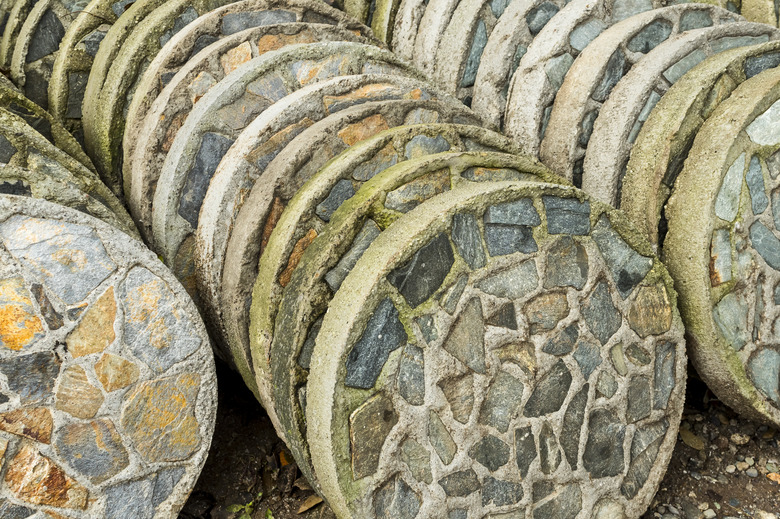What To Use As A Form To Pour A Concrete Circle
We may receive a commission on purchases made from links.
The nice thing about concrete is it conforms to any shape you pour it into, including a circle. The tricky thing about pouring a concrete circle is the standard wood-and-stake methods typically used to make rectangles don't work without a bit of modification and extra work. Instead, use flexible plastic forms, buckets, metal cans, or even cake pans, depending on the desired size of the finished concrete circles.
Plastic or Wood Concrete Forms
Plastic or Wood Concrete Forms
Plastic forms used to create shaped concrete look and function a bit like flexible plastic garden edging. Depending on the brand, the pieces may snap together like interlocking garden edging, or the form may start off on a large roll that can be cut to size or used with a special connector that doesn't require any cuts. Flexible plastic forms are good for fairly large concrete slabs; essentially, for anything larger than any circular household objects you may have on hand. They're also reusable and quite versatile for creating curves of various sizes. If you can't find flexible plastic forms, strips of flexible hardboard or thin plywood also work, although they'll require sawing the pieces to fit the project.
Using a flexible plastic form to make a circle first requires plotting out a perfect circle in the desired location. Clear out any debris, place a metal stake at the center of the future circle, then tie some twine to it using a loose loop to secure the twine over the post. Tie some yard-marking chalk to the other end of the twine so the distance from the center post to the chalk is half the diameter of the circle. Walk around the post with the twine taut while applying the chalk, creating a perfect circle.
Hammer in some metal stakes at various points along the circle, using as many as indicated by the instructions for your specific brand of plastic concrete form. In some cases, the form may be shaped and attached to the stake at each point as you're adding stakes. Once the circular form is in place within the stakes and pushed all the way to ground level on your previously cleaned and leveled surface, you're ready to mix and pour the concrete.
Common Objects as Concrete Forms
Common Objects as Concrete Forms
Using common, everyday objects to make concrete forms is a fun way to repurpose items you may already have on hand. For instance, a 5-gallon bucket with a round bottom makes a nice circle shape to create a stepping stone, as does a thrift-store round cake pan. Plastic bowls come in handy for making concrete bowls, stepping stones, or even a concrete lamp. Whatever you choose for your form must be strong enough to not bow or fail under the weight of the wet concrete in it.
Sturdy cardboard canisters or tubes, such as the large tubes used to hold carpeting or rubber sheet roofing, make nice concrete forms for circles or cylinders, as do plastic bottles with flat bottoms, if you cut the bottle to just a little taller than you need for your circular concrete project. If you plan to reuse form-making items, as may be the case if you're creating a series of stepping stones, use a mold-release agent, which makes it easier to remove the form once the concrete cures as directed on the package. Make your own mold release by mixing equal parts vegetable and mineral oil and rubbing it over the inside of the form.
